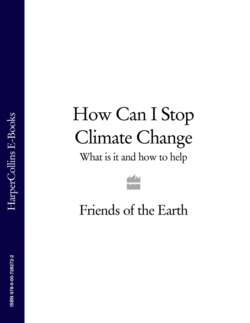Читать книгу How Can I Stop Climate Change: What is it and how to help - Литагент HarperCollins USD, F. M. L. Thompson - Страница 64
the threat of extreme change
ОглавлениеSome scientists believe that warming presents a risk of more extreme irreversible climate change as the Earth’s natural systems swing out of balance.
Thawing permafrost: Peat bogs in Siberia and Alaska are thawing, releasing carbon dioxide and methane that they have stored for thousands of years.
The albedo effect: melting snow and ice exposes rocks, trees and tundra which are less reflective so they absorb more of the sun’s energy, adding to warming and melting more snow.
Ocean warming: Methane deposits, known as clathrates, are stored in sediments under the oceans. Warming might lead to the release of huge quantities of methane gas into the atmosphere.
Scientists say there is a greater than 90 per cent chance that the great ocean conveyor – the Meridional Overturning Circulation – will slow down this century, and it could switch off in the longer term. This would imply a huge change in natural cycles.
Recent studies by NASA director and scientist James Hansen suggest that ice sheets can melt much faster than the thousands of years envisaged by the IPCC. This is because melt water under the ice sheet speeds up the breaking up and melting of the ice. Hansen also found that other greenhouse gases – and soot particles – are speeding up melting in the Arctic. This is because the dark flecks absorb more heat. As a result, he warned, an average temperature rise of just 1°C could lead to a sea level rise of between 2 and 6 metres. If Greenland’s ice sheets melt quickly this will change the temperature in the Atlantic ocean, with dramatic effects on the world’s weather systems.
If a small amount of human-induced global warming triggers massive natural warming, the result is likely to be climate change that happens over decades rather than centuries.
The great ocean conveyor belt Ocean currents redistribute heat around the planet, (below), for example bringing warm water from the tropics to the UK via the Gulf Stream, and cold water to Newfoundland, with striking effects on both countries’ climates. Source: IPCC.
